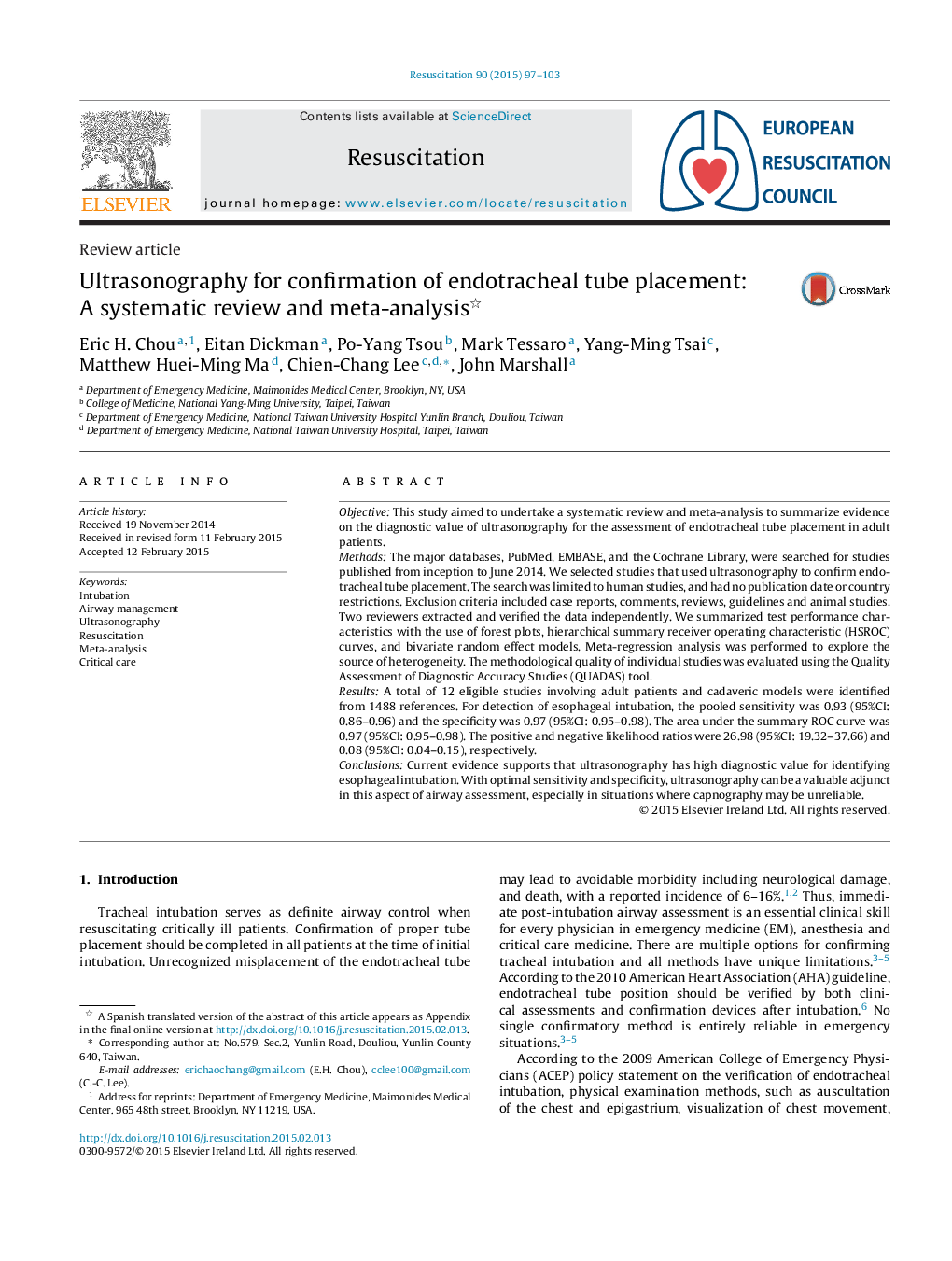| Article ID | Journal | Published Year | Pages | File Type |
|---|---|---|---|---|
| 3007926 | Resuscitation | 2015 | 7 Pages |
ObjectiveThis study aimed to undertake a systematic review and meta-analysis to summarize evidence on the diagnostic value of ultrasonography for the assessment of endotracheal tube placement in adult patients.MethodsThe major databases, PubMed, EMBASE, and the Cochrane Library, were searched for studies published from inception to June 2014. We selected studies that used ultrasonography to confirm endotracheal tube placement. The search was limited to human studies, and had no publication date or country restrictions. Exclusion criteria included case reports, comments, reviews, guidelines and animal studies. Two reviewers extracted and verified the data independently. We summarized test performance characteristics with the use of forest plots, hierarchical summary receiver operating characteristic (HSROC) curves, and bivariate random effect models. Meta-regression analysis was performed to explore the source of heterogeneity. The methodological quality of individual studies was evaluated using the Quality Assessment of Diagnostic Accuracy Studies (QUADAS) tool.ResultsA total of 12 eligible studies involving adult patients and cadaveric models were identified from 1488 references. For detection of esophageal intubation, the pooled sensitivity was 0.93 (95%CI: 0.86–0.96) and the specificity was 0.97 (95%CI: 0.95–0.98). The area under the summary ROC curve was 0.97 (95%CI: 0.95–0.98). The positive and negative likelihood ratios were 26.98 (95%CI: 19.32–37.66) and 0.08 (95%CI: 0.04–0.15), respectively.ConclusionsCurrent evidence supports that ultrasonography has high diagnostic value for identifying esophageal intubation. With optimal sensitivity and specificity, ultrasonography can be a valuable adjunct in this aspect of airway assessment, especially in situations where capnography may be unreliable.
